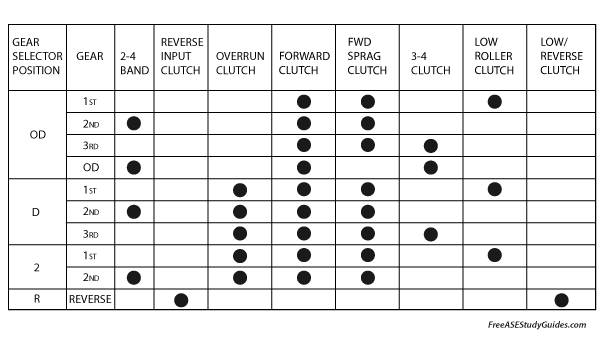ASE A2 Automatic Transmission Practice Test
41. An automatic transmission has no dipstick. After bringing the transmission to its operating temperature and removing the plug, no transmission fluid is seen dripping from the outlet. Technician A says this is normal, and the fluid level is correct. Technician B says this indicates an overheated transmission. Who is correct?
- A. Technician A
- B. Technician B
- C. Both A and B
- D. Neither A or B
42. Which of these automatic transmission bearings require a preload?
- A. Ball bearings.
- B. Thrust bearings.
- C. Tapered roller bearings.
- D. Needle bearings.
43. The extension housing seal leaks and the bushing is worn on one side. Technician A says a binding universal joint could be the cause. Technician B says excessive output shaft endplay has caused this condition. Who is correct?
- A. Technician A
- B. Technician B
- C. Both A and B
- D. Neither A or B

44. The automatic transmission in the chart is slipping, and the transmission fluid is dark and smells burnt. Which of the following is MOST likely causing this condition?
- A. The forward clutch.
- B. The low roller clutch.
- C. Differential case bearings.
- D. The torque converter clutch.

45. The electrical symbol above is:
- A. A variable resistor.
- B. A capacitor.
- C. An inductor.
- D. None of these.